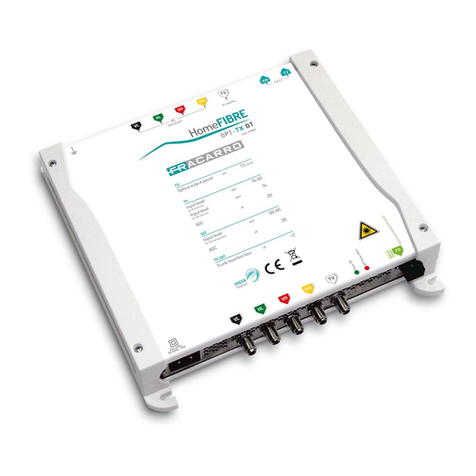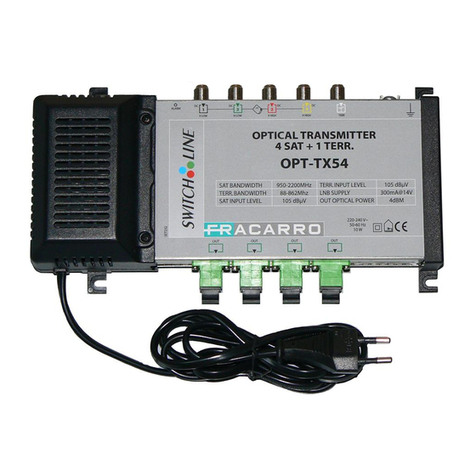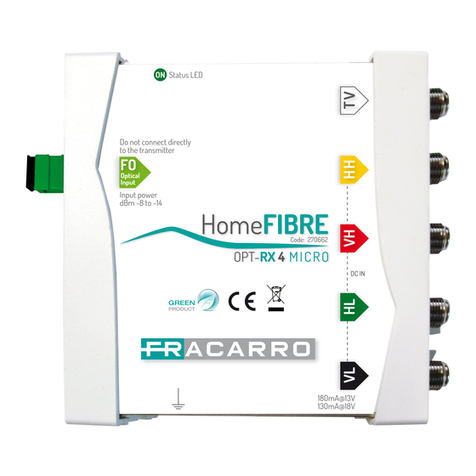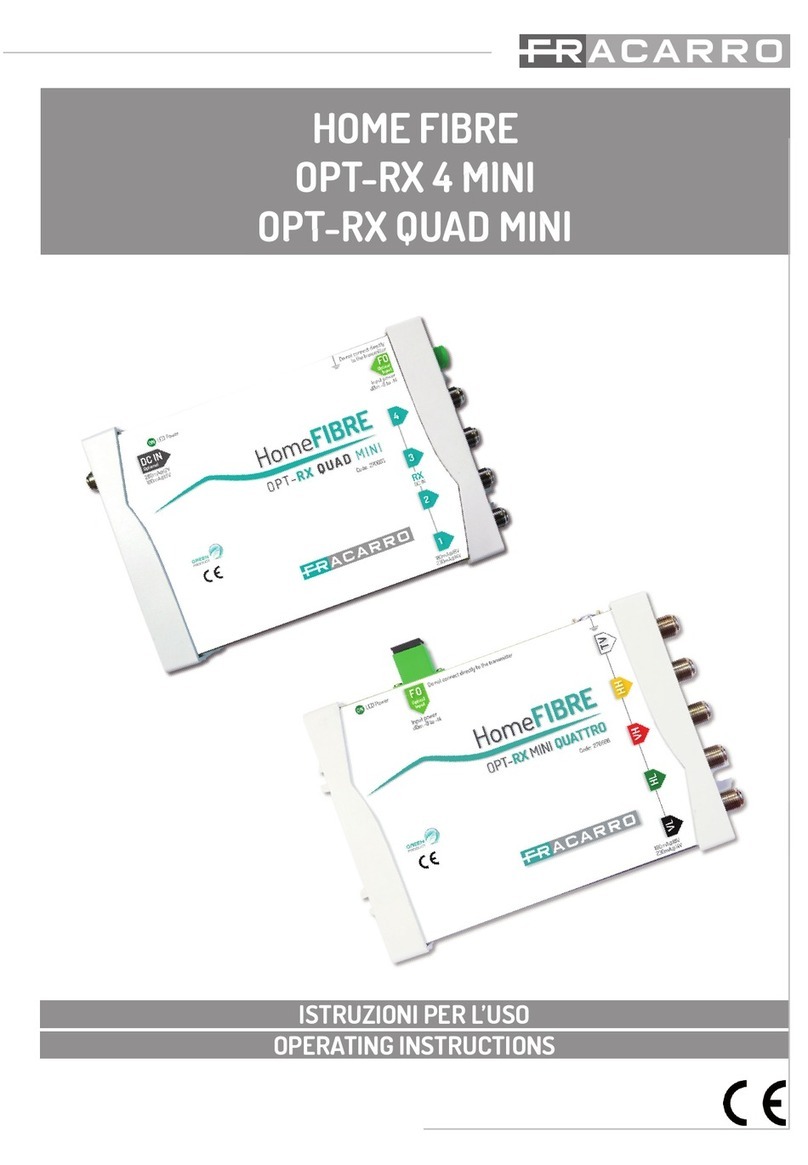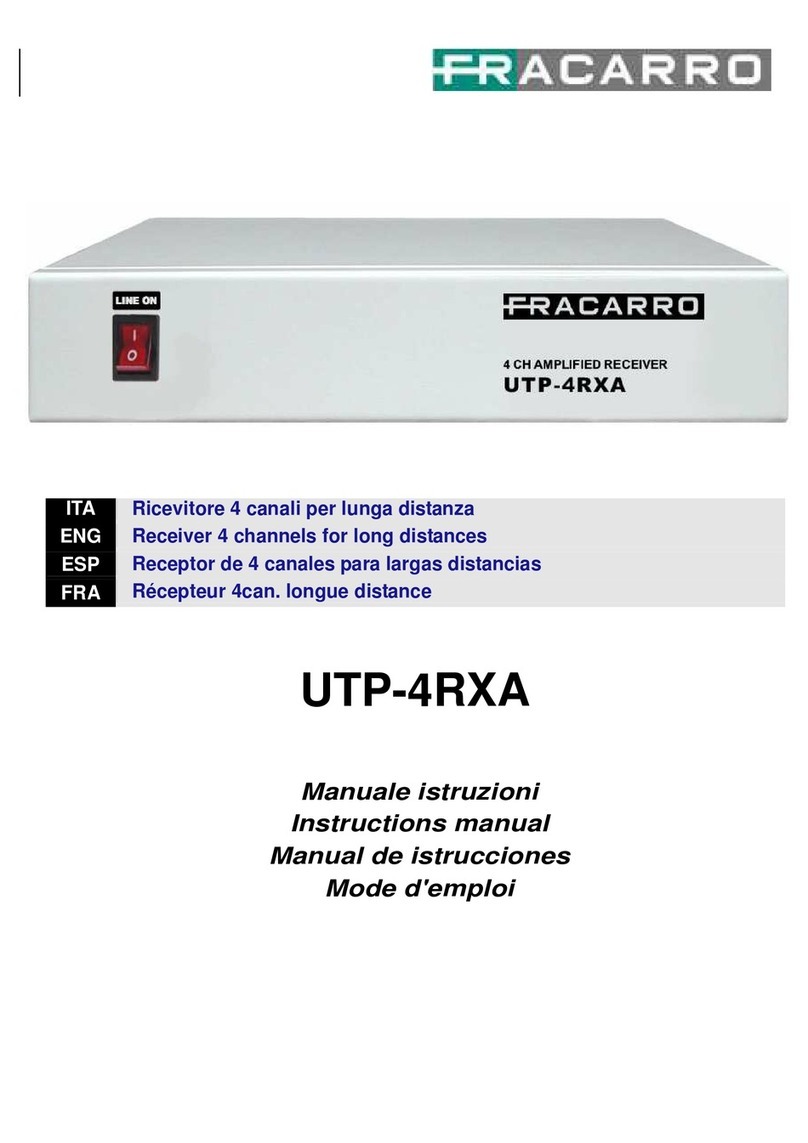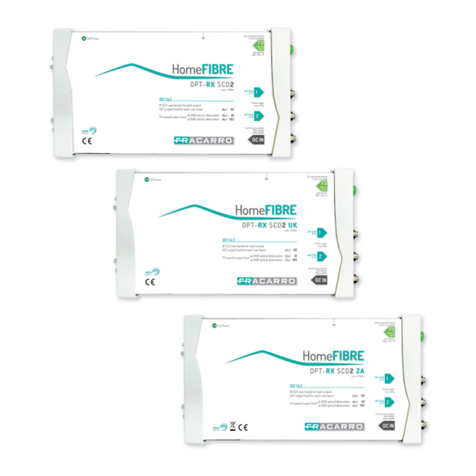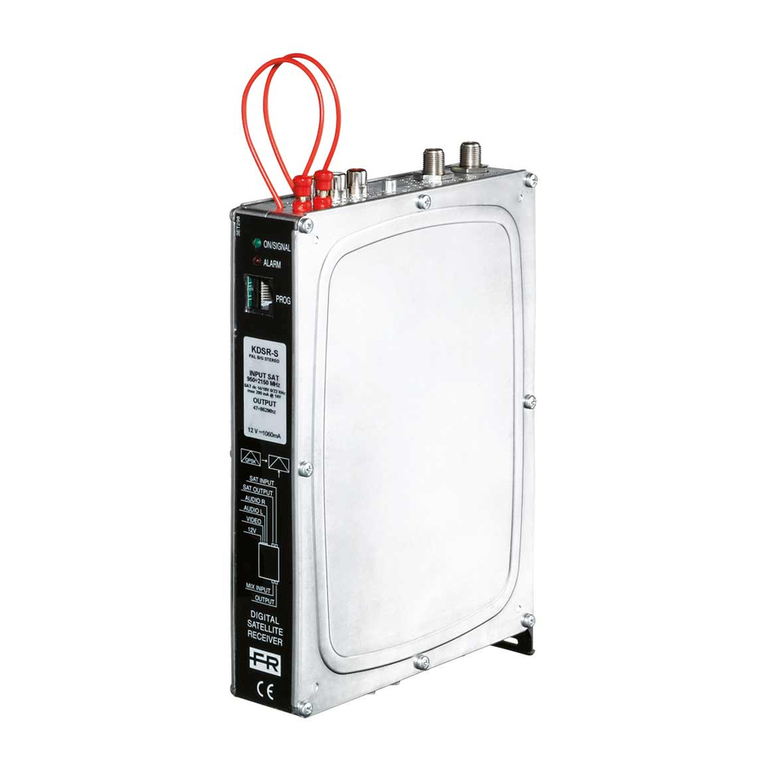
2
Italiano
L’installazione del prodotto deve essere eseguita da personale qualificato in conformità alle leggi e normative
locali sulla sicurezza. Fracarro Radioindustrie di conseguenza è esonerata da qualsivoglia responsabilità civile o
penale conseguente a violazioni delle norme giuridiche vigenti in materia e derivanti dall’uso improprio del prodotto
da parte dell’installatore, dell’utilizzatore o di terzi. L'installazione del prodotto deve essere eseguita secondo le
indicazioni di installazione fornite, al fine di preservare l'operatore da eventuali incidenti e il prodotto da eventuali
danneggiamenti. Non aprire il contenitore del prodotto, parti a tensione pericolosa possono risultare accessibili
all'apertura dell'involucro.
Avvertenze per l’installazione
●Il prodotto non deve essere esposto a gocciolamento o a spruzzi d’acqua e va pertanto installato in un
ambiente asciutto, all’interno di edifici.
●Umidità e gocce di condensa potrebbero danneggiare il prodotto. In caso di condensa, prima di utilizzare il
prodotto, attendere che sia completamente asciutto.
●Maneggiare con cura. Urti impropri potrebbero danneggiare il prodotto.
●Lasciare spazio attorno al prodotto per garantire una ventilazione sufficiente. L’eccessiva temperatura di
lavoro e/o un eccessivo riscaldamento possono compromettere il funzionamento e la durata del prodotto.
●Non installare il prodotto sopra o vicino a fonti di calore o in luoghi polverosi o dove potrebbe venire a
contatto con sostanze corrosive. In caso di montaggio a muro utilizzare tasselli ad espansione adeguati
alle caratteristiche del supporto di fissaggio. La parete ed il sistema di fissaggio devono essere in grado di
sostenere almeno 4 volte il peso dell’apparecchiatura.
Attenzione: per evitare di ferirsi, questo apparecchio deve essere assicurato alla parete/pavimento secondo le
istruzioni di installazione.
Per “APPARECCHIATURE INSTALLATE PERMANENTEMENTE”, un dispositivo di sezionamento facilmente
accessibile deve essere incorporato all’esterno dell’apparecchiatura; per “APPARECCHIATURE CON SPINA DI
CORRENTE”, la presa deve essere installata vicino all’apparecchiatura ed essere facilmente accessibile.
Il prodotto deve essere collegato all’elettrodo di terra dell’impianto d’antenna conformemente alla norma EN
60728-11. La vite predisposta per tale scopo è contrassegnata con il simbolo .
Si raccomanda di attenersi alle disposizioni della norma EN 60728-11 e di non collegare tale vite alla terra di
protezione della rete elettrica di alimentazione.
Non guardare mai dentro ai connettori ottici del prodotto. La radiazione laser non è visibile ad occhio nudo e quindi
non è possibile prevenire un danno a lungo termine.
Quando si lavora con i connettori ottici del partitore, controllare sempre che i laser di eventuali trasmettitori ottici
ad esso collegati, siano spenti.
Simbolo classe II con una connessione alla terra funzionale
Simbolo di terra dell’impianto d’antenna
LASER RADIATION
INVISIBLE LASER RADIATION
DO NOT VIEW DIRECTLY WHITH
OPTICAL INSTRUMENTS
(MAGNIFIERS)
CLASS 1M LASER PRODUCT
ATTENZIONE:
Radiazione Laser invisibile.
Non osservare direttamente
Prodotto laser di CLASSE 1M.
Avvertenze generali
In caso di guasto non tentate di riparare il prodotto altrimenti la garanzia non sarà più valida. Utilizzare
esclusivamente l’alimentatore fornito in dotazione con il prodotto. Le informazioni riportate in questo manuale
sono state compilate con cura, tuttavia Fracarro Radioindustrie S.r.l. si riserva il diritto di apportare in ogni
momento e senza preavviso, miglioramenti e/o modifiche ai prodotti descritti nel presente manuale. Consultare
il sito www.fracarro.com per le condizioni di assistenza e garanzia.
AVVERTENZE PER LA SICUREZZA
